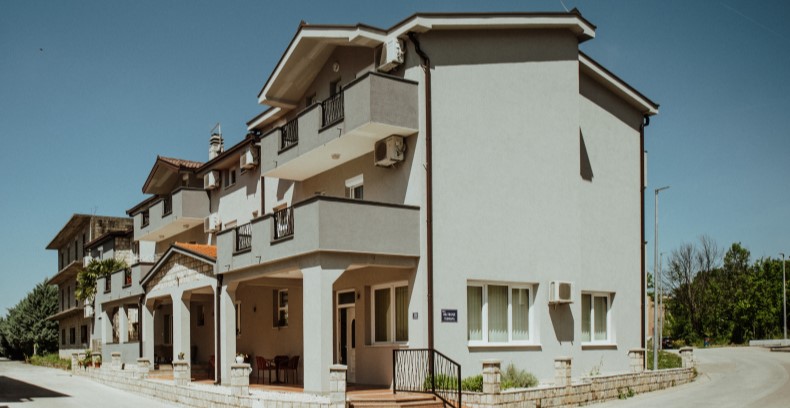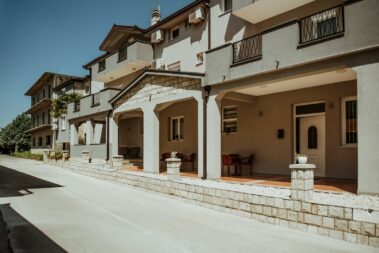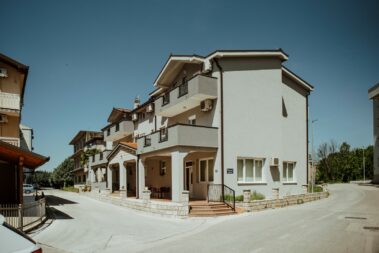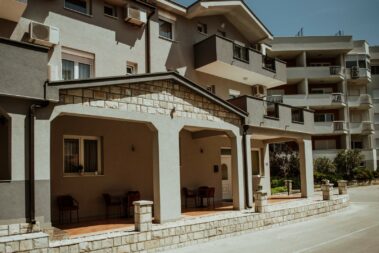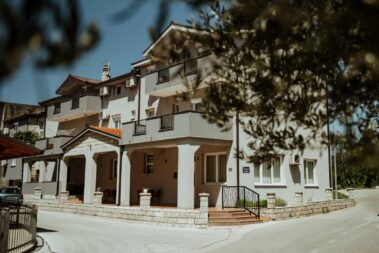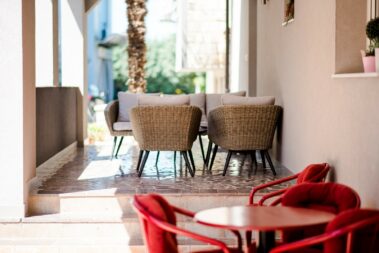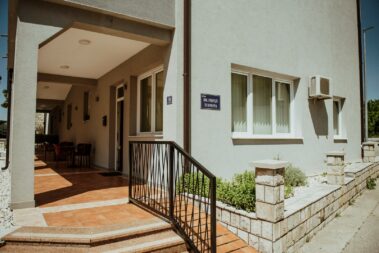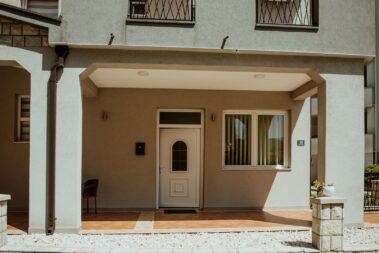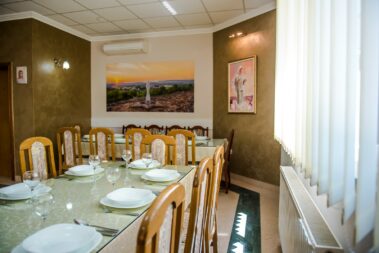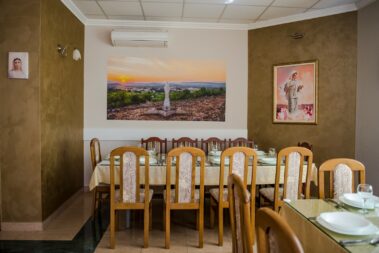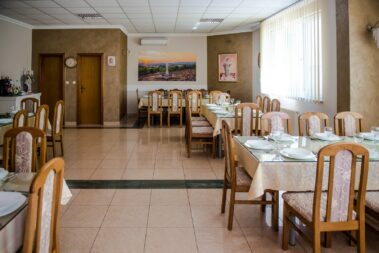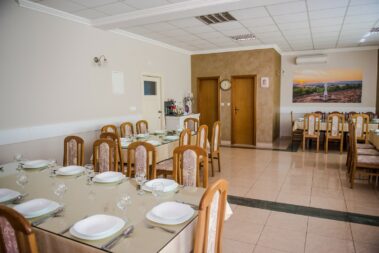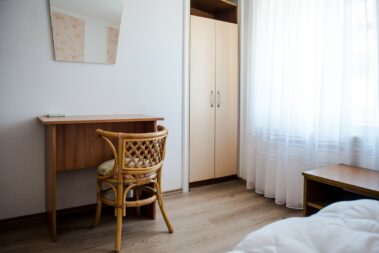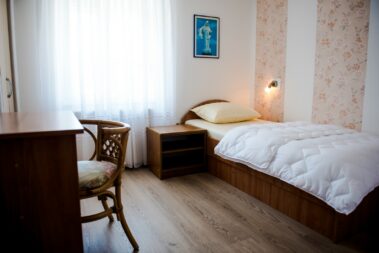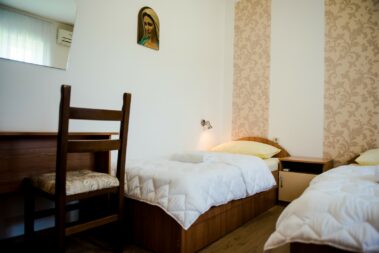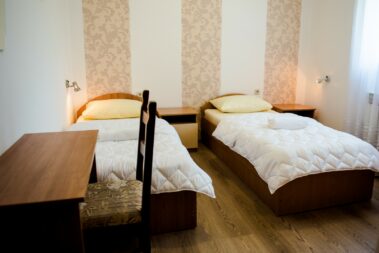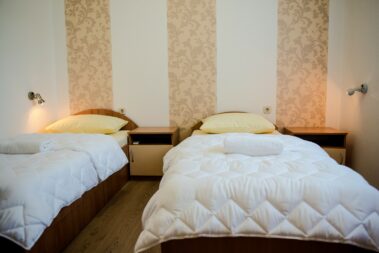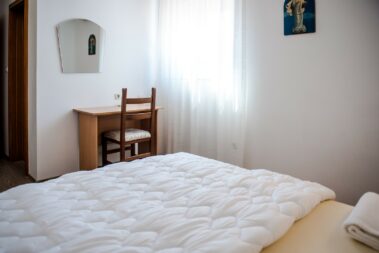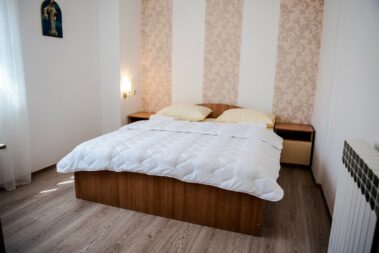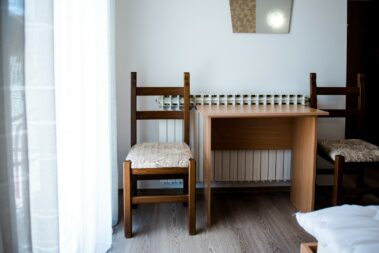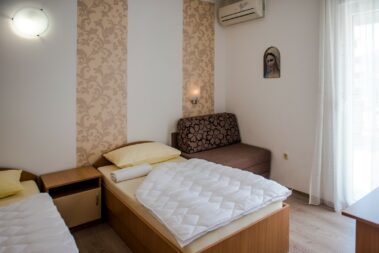Before June 24, 1981, Međugorje was like any other village in the southern regions: people worked the land, planted tobacco and grapes, produced wine, and grew vegetables to feed and support their families. Due to social and political circumstances, many left in search of better opportunities in overseas and Western European countries.
The apparitions of the Blessed Virgin Mary, Queen of Peace, began in 1981, and the life of the parish has since changed dramatically. Our Lady chose not only six visionaries but the entire parish and its pilgrims as her witnesses and collaborators. This was explicitly stated in the message: “I have chosen this parish in a special way, and I wish to lead it.” (March 1, 1984).
On June 24, 1981, around 6 p.m., six children – Ivanka Ivanković, Mirjana Dragičević, Vicka Ivanković, Ivan Dragičević, Ivan Ivanković, and Milka Pavlović – saw a young woman with a child in her arms on the hill of Crnica, a few hundred meters above the village of Podbrdo. She beckoned to them with her hand, but the children, who were surprised and scared, did not approach her.
The next day, June 25, 1981, four of the children – Ivanka Ivanković, Mirjana Dragičević, Vicka Ivanković, and Ivan Dragičević – felt a strong desire and attraction towards the place where the day before they saw a person whom they recognized as Our Lady. Along the way, they are joined by Marija Pavlović and Jakov Čolo. They prayed and talked to Our Lady, who introduced herself as the Queen of Peace. As a result, June 25 is celebrated as the anniversary of the apparitions. According to their testimony, they had daily apparitions from that day on, together or separately, wherever they were. Milka Pavlović and Ivan Ivanković did not see the Virgin Mary again.
On the third day of the apparitions, June 26, 1981, the Virgin Mary called for peace, saying, “Peace, peace, peace – and only peace! Peace must reign between God and man and among men!” Attracted by Our Lady’s apparitions and messages, the people – first parishioners, and then from other villages and from all over the world – began to gather and pray.
Persecution of the visionaries, their parents and relatives, parishioners, and even pilgrims began immediately after the apparitions began. The seers were taken to police tests and psychiatric examinations, but each time they were found to be healthy. The same conclusion was reached in further tests carried out in the following years.
Fr. Jozo Zovko, then pastor in Medjugorje, was arrested a month and a half after the first apparition. Although innocent, the communist court sentenced him to three and a half years in prison.
Thanks to Our Lady’s apparitions, Međugorje – a simple village parish – became a gathering place for many pilgrims from all over the world (more than 20 million in the first 20 years), and one of the largest prayer centers in the world, comparable to Lourdes and Fatima. Countless witnesses say that they found faith and peace in this very place – and they return to the Our Lady again and again.
St. James Church
The first parish church in Međugorje was built shortly after the foundation of the parish. The church was built by Father Nikola Simovic with the help of the parishioners between 1896 and 1897. This was a very big event for those times of poverty of this nation. The church was beautiful both on the outside and inside. Due to the unstable ground on which it was built, its walls soon began to crack, and the entire building was sinking. Therefore, immediately after World War I, people began to think about building a new church.
In 1935, the bishop granted permission to build a new parish church after many years of negotiations and agreements. The excavation of the foundation began in June 1935. The design for the magnificent Međugorje church, which he called “basilica,” was made for free by the famous Zagreb architect Stjepan Podhorsky. He worked on the restoration and construction of several sacred buildings in Herzegovina, including the magnificent basilica in Tomislavgrad and the Catholic church in Subotica, Vojvodina. The Medjugorje church has three naves, and the front part was planned with two towers made of hewn stone. “The design was taken from old Croatian basilicas in a modern style, in a simpler yet strictly church style.” Although there was a lot of controversy about the proposed dimensions and the need for two bell towers.
By the start of World War II, the walls had reached a height of 2.5 meters, and after that, the work stopped until the 1960s. In 1966, work on the church resumed, and it was completed in 1969. The church was blessed on January 19, 1969. The interior decoration of the church was completed in 1980.
The parish church and the area around the church is a place for celebrating the Eucharist and sacramental life. The church, like the parish, is dedicated to St. James the Elder, the Apostle and patron saint of pilgrims. In 1991, an outdoor altar and twenty confessionals were built next to the church. A chapel for Eucharistic adoration with rooms for lectures and spiritual conversations was also built. Two tents were erected for appropriate celebrations.
Mount Podbrdo – Apparition Hill
The place of the first apparitions of Our Lady, a few hundred meters above the hamlet of Podbrdo, is now called Apparition Hill. A steep path leads from the houses to the very place of the apparitions, along which – in 1989 – bronze reliefs were placed representing the joyful and the sorrowful mysteries of the Rosary (the work of Prof. Carmelo Puzzolo).
On the way to the place of the apparitions, at the second station of the joyful mystery, a large wooden cross was erected, marking the spot where Our Lady, through Marija Pavlović gave the call to peace for the first time, on the third day of the apparitions.
At the very place of the apparitions, in honor of the 20th anniversary, a statue of the Queen of Peace was placed, sculpted according to the model of the statue, which you can find in front of the parish church, white marble statue made by the Italian sculptor Dino Felici from Massa Carrara. The statue was a gift from Korean pilgrims. Deeply inspired after the healing of a child, they wanted to do something to thank God and the Queen of Peace for the Mercy they received. They also included their prayer “for peace in Korean peninsula” in this intention, as they wrote it on the stone piece they brought from Korea.
The encounter with the Apparition Hill for pilgrims is an encounter with Our Lady through personal prayer and prayer of Rosary.
In June 2002, bronze reliefs of the Glorious Mysteries of the Rosary (the work of Prof. Carmelo Puzzolo) were placed on the path that descends from the Apparition site towards the Blue Cross. At the foot of Apparition Hill is the Blue Cross, erected in 1985. Since July 4th, 1982, the prayer group of the seer – Ivan Dragičević has been meeting regularly at that place.
Cross Mountain
The Cross on the hill called Šipovac was built in 1934. The parishioners, led by their pastor Fr. Bernardin Smoljan, erected this votive cross in memory of the 1900th anniversary of the Passion and Death of Our Lord Jesus Christ. The decision to build the cross was made after Christmas 1933.
The idea to build the cross came from the Vatican. Namely, Pope Pius XI. expressed his wish that on the occasion of the 1900th anniversary of the death of Our Lord Jesus Christ, crosses would be built on high places all over the world. Despite the great poverty, this idea was accepted by the then pastor of Medjugorje, Fr. Bernardin Smoljan, and on January 21, 1934, his parishioners decided and started construction.The works lasted for about a month.
The parishioners worked enthusiastically on the construction of the cross, carrying gravel, cement, iron, wood, and water on their own backs or with the help of horses. The cross is 8.52 meters high. Relics of the True Cross of Jesus were embedded in the handle of the cross, which were obtained from Rome for that occasion. The cross was built at an altitude of 498 meters. The blessing of the cross was solemnly celebrated on Friday, March 16th, 1934. It was a great celebration in the parish of Međugorje, witnessed by many priests and the failthful from other surrounding parishes. On that occasion, the hill was given a new name – Križevac.
The words engraved in the cross are carried in the hearts of all those millions of pilgrims state:
IHS / TO JESUS CHRIST / REDEEMER
OF HUMANITY / IN SIGN OF THEIR
FAITH, LOVE, AND HOPE / THEY RAISED /
BERNARDIN / SMOLJAN / PASTOR /
AND THE PARISH / OF MEĐUGORJE / FROM /
ALL EVIL / FREE US / JESUS!
“Dear children! The cross was also in God’s plan when you built it. These days, especially, go on the mountain and pray before the cross. I need your prayers. Thank you for having responded to my call.” – said Our Lady in a message from August 30th, 1984.
Križevac was already enriched with the stations of the Way of the Cross, created by Italian artist Carmelo Puzzolo. The Stations arrived in Međugorje in the fall of 1987, but the authorities only allowed their installation on the hill before Easter in March 1988. The parishioners helped in this.
On November 24th, 2001, on the first anniversary of the death of Father Slavko Barbarić, a memorial was erected at the spot where he surrendered his soul to the hands of the Lord: a bronze relief of Father Slavko was embedded in stone between two stations of the Way of the Cross. It will remain as a symbol and memory of a man who spoke what he thought and did what he said, following the Gospel and the messages of the Queen of Peace.
Today, Križevac is a must-go for many Međugorje pilgrims from all over the world, and every Friday afternoon, parishioners and pilgrims perform the regular pilgrimage of the Way of the Cross alongside Križevac. Every stone up to the top of Križevac is worn and thus vividly bears witness to the prayers, thanks, vows… of millions of pilgrims who climbed this hill above Medjugorje.


